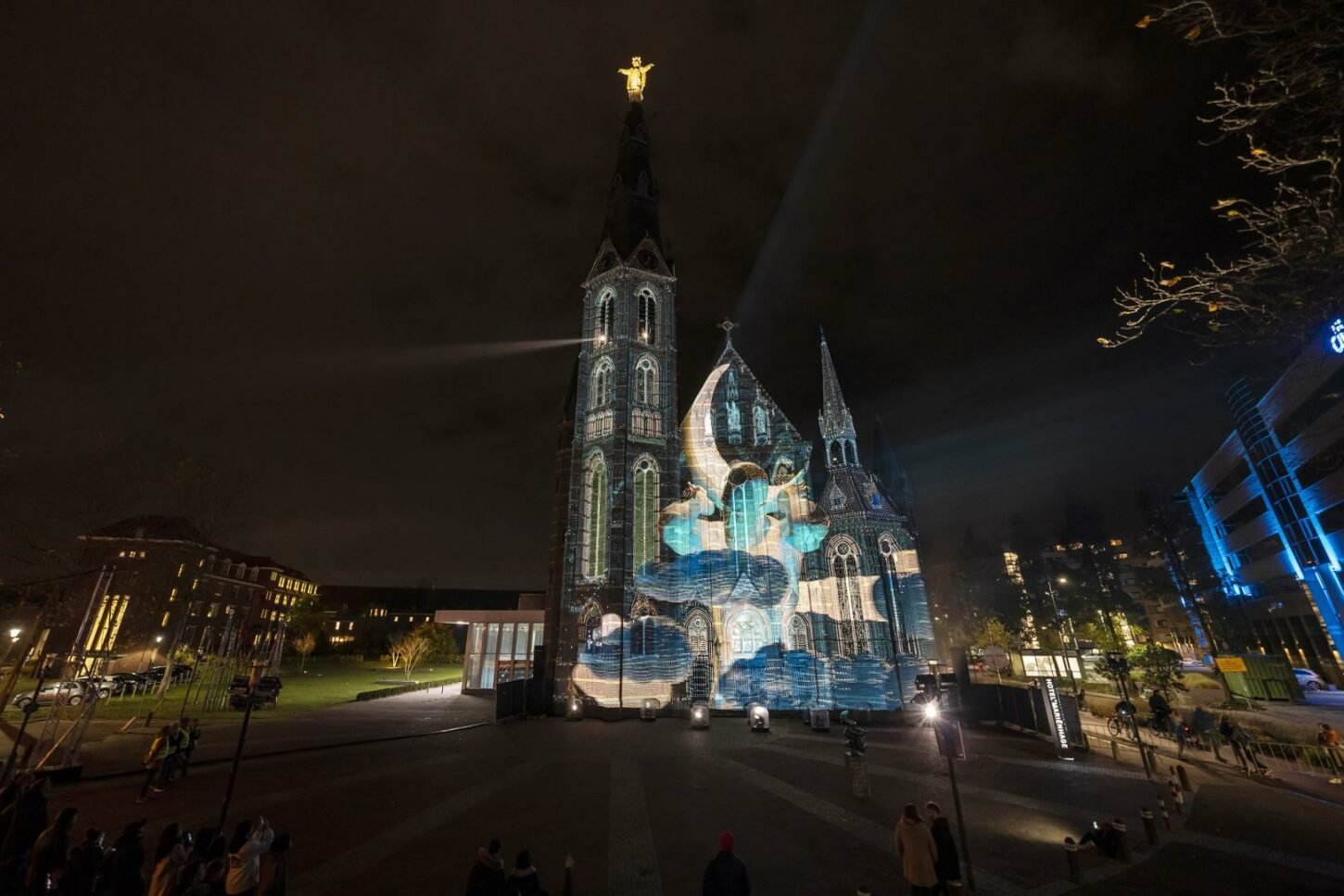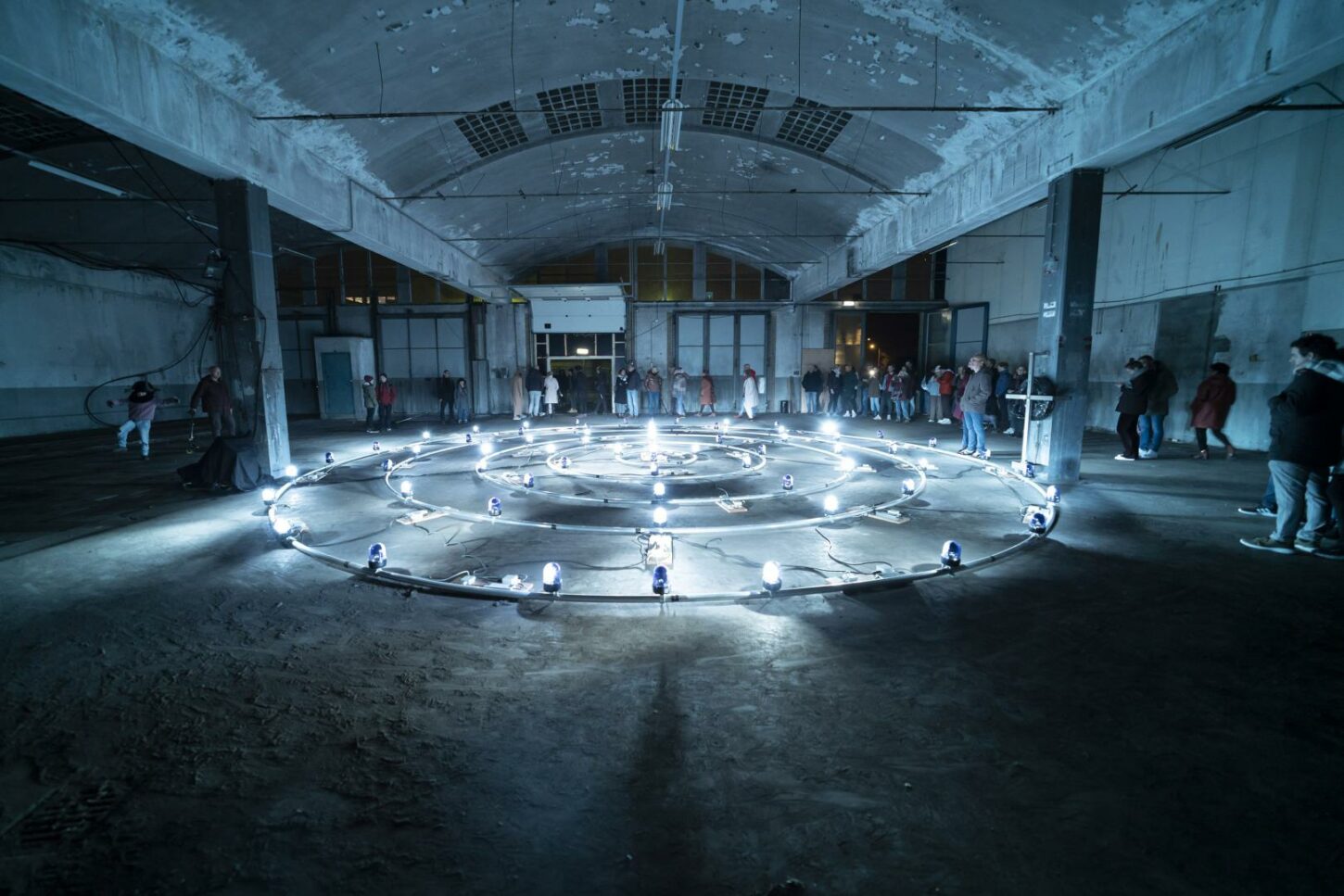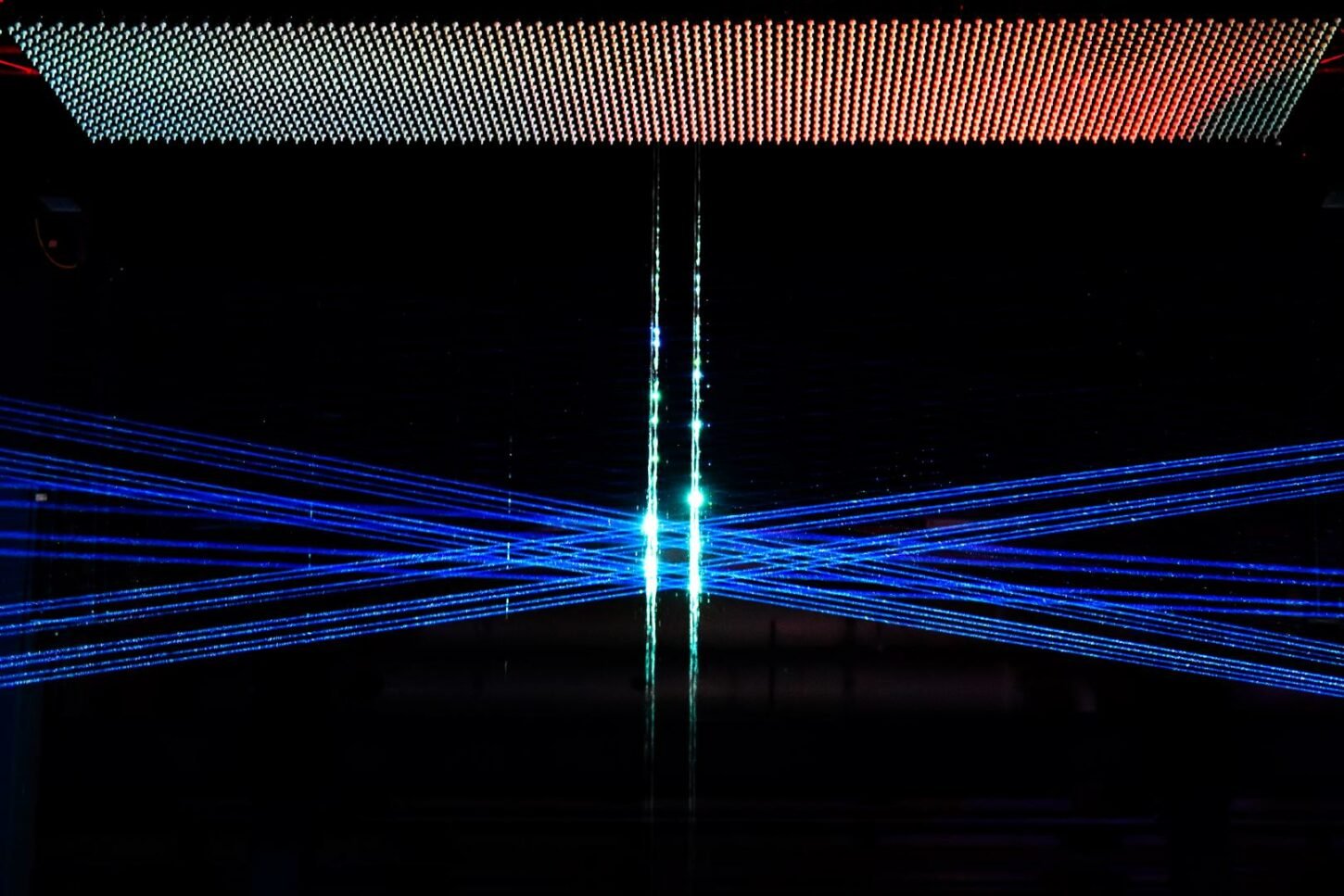In honor of the construction of the Nanjing Pavilion, Gijs van Bon has adapted his installation PING to represent a dragon in abstract form. The dragon is seen in the Chinese tradition as a protector, the dragon’s head should therefore always rise above the building so that he can perform his task. PING is an installation in which messages and wishes are sent. This combination of symbols represents the hopeful wish.
What is PING?
In the distant past, primitive means like smoke signals, drums and fire beacons were used on mountain tops to transmit messages. The light art work is a reference to this. Light and sound are communicated using modern technology, from one beacon to the next, until the message has reached the end of the line. Slow sounds, the sound of drums getting louder or the tinkle of a little bell travel down the 200 beacons. A chain reaction of whishes embraces the GLOW visitor with atmosphere and dynamic light and sound. Sometimes fast and hard, sometimes poetic and hushed.
PING employs hi-tech contemporary technology. A wireless network links the beacons in an intelligent system that allows for the flow of information.
Utilising this makes more possible than just the basic communication of messages. The PING kick-off took place during GLOW2018. The project was developed further and showed again at GLOW 2019. This year it can be seen in the new Najing Pavilion which will be opened at Strijp-S on November 5th.
The Najing Paviljoen
Najing Pavilion Eindhoven and the Chinese city of Nanjing have been friends for more than thirty years. Eindhoven gave Nanjing a Friendship Park as a gift. In exchange, Eindhoven received the Chinese Pavilion. The pavilion includes a Chinese restaurant, tea house and exhibition space. It should become a meeting place for the Chinese community with the Eindhoven and international community of 169 different ethnicities.
Exhibitions of Chinese art and fine art will alternate. The patio is decorated with varying Chinese objects, with the city of Nanjing as the theme. A core theme The pavilion also pays attention to the Chinese language, culture and medicine studies.



